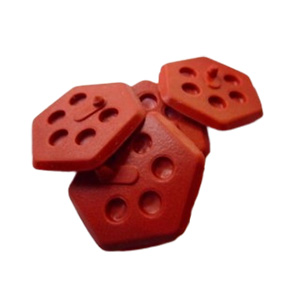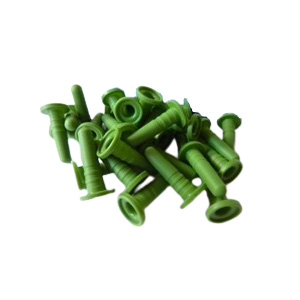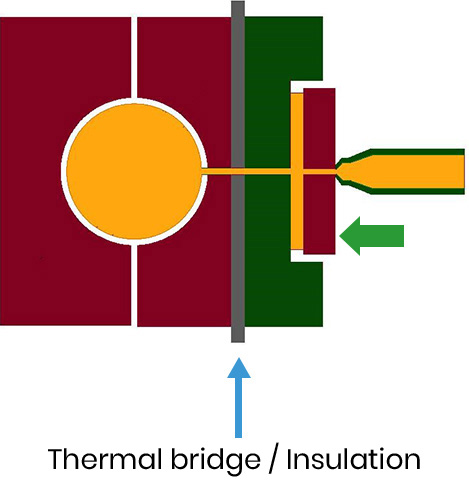Injection molding

The elastomer (rubber or silicone) is automatically dosed by the press via an endless screw, preheated (from 40 to 100°C) and then injected into a hot mold (175 to 200°C) with one or more cavities.
Each cavity is filled by one or more injection points and one or more parting lines (separating lines between the mold plates) may be necessary to demold the part in optimal conditions.
These injection points and parting lines must be defined in agreement with the customer, as they present slight irregularities that can affect the appearance and function of the part, …..
In the cavities, the combined effect of pressure and temperature vulcanises the elastomer.
After a set time recorded in the press parameters, the press opens the mold to allow demolding.
The different elastomer injection methods we use are described below.
The choice of method for an application depends mainly on the following criteria: geometry of the part, annual quantity, cost of the elastomer.
Compression injection

The elastomer is dosed and injected by the press into the slightly half-open parting line.

The cavities are then closed and the material is pressed; the excess material fills the “rubber grooves”.
Hot transfer injection

The mold closes and the chamber remains slightly open.
The injection unit has automatically dosed the rubber (in masked time during vulcanisation) and injects it into the chamber, then the press closes completely and, by translating, transfers the contents of the chamber into the mold cavities. The rubber remaining in the chamber is lost.
The process is similar to injection transfer (‘hot’ above).
The difference concerns the transfer part, which is not hot but warm or cold, so that the material is not lost with each cycle but is renewed automatically.
Material savings are substantial and the additional cost of this technology can be amortised if a large quantity has to be produced annually and/or the cost of the material is high.
Indirect single nozzle injection
The mold is closed half-open, then an air vacuum is generated and measured in the cavities.
The mold is then clamped and the injection unit, which has automatically dosed the rubber (in masked time during vulcanisation), injects it through the injection channels.
The injection channels can be reduced
Indirect single nozzle injection
The mold is closed half-open, then an air vacuum is generated and measured in the cavities.
The mold is then clamped and the injection unit, which has automatically dosed the rubber (in masked time during vulcanisation), injects it through the injection channels.
The injection channels can be reduced
Multi-nozzle indirect injection
The principle is the same as for single nozzle indirect injection. The elastomer is not injected through a single central nozzle, but through several temperature-regulated nozzles.
This shortens the distance the elastomer has to pass between each nozzle and the mold. Material savings are substantial, and the additional cost of this technology can be amortised in the case of large annual production quantities and/or high material costs.
The mould is closed half-open then the air vacuum is made and measured in the cavities.
Then the mould is clamped and the injection unit which has automatically dosed the rubber (in masking time during vulcanization) injects it through open nozzles cooled or preheated directly into the cavities.
Direct injection WITH needle

A needle is added to each nozzle to open and close the material gate on command.
Some projects by Chevalier, Cleret, Eltec

Grommet

Shock absorbers

Anti-vibration

Diaphragm and bellows

Stop

Static or quasi-static seal
Learn more about silicone rubber injection molding
To learn more about silicone rubber injection molding, download our documentation. Don’t hesitate to contact us using the form if you have any questions or a project to develop.







